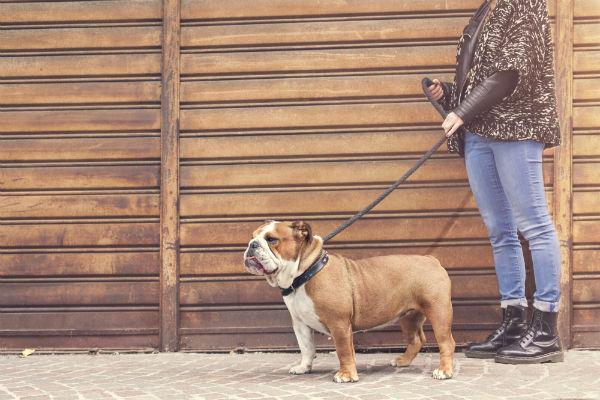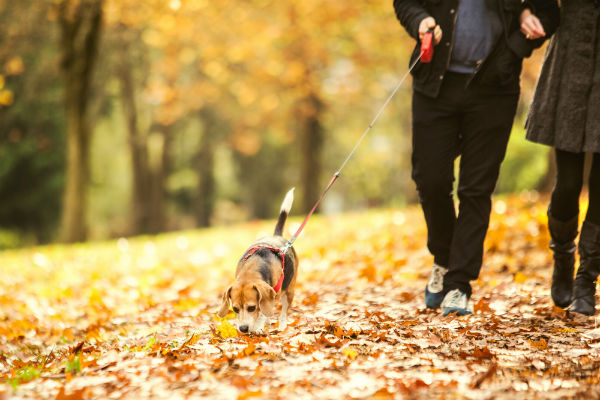Your dog’s daily walk is likely one of the highlights of their day. Going for a walk can provide your dog with more than just a bathroom break. It can give them Physical exercise, mental stimulation, and a chance to keep tabs on the neighborhood. To make sure your dog is truly enjoying their walks, be sure to avoid these three common mistakes.
Rushing Bathroom Breaks
Where dogs choose to go to the bathroom is an important decision. It’s not just about relieving themselves, it’s about communicating with the world-at-large. Dogs use their urine to signal their presence to other dogs. And in turn, smelling other dogs’ urine tells a dog all about the other canines in the community, including their gender, age, and health. This system of pee-mail keeps dogs up-to-date on what’s happening in their neighborhood.
"Fix Any Bad Dog Behavior in Minutes With The Most Powerful Dog Training Technique Ever"
While on a walk, dogs want to sniff out all the places other dogs have gone to the bathroom, so they can leave a fresh deposit on top. This is the equivalent of human graffiti, saying, “Rover was here.” Male dogs specifically will lift their back leg as high as possible to get their urine up to the nose level of other dogs.
If the urine or feces isn’t enough of a message, dogs sometimes scratch the ground with their feet to further emphasize their signal. Along with leaving an additional visual cue, they use special glands between their toes to leave extra scents on the ground as they scratch, adding even more impact to the scent mark.
All of this sniffing and scratching requires concentration and time. Giving your dog the opportunity to sniff the pee-mail and leave messages of his own will help him get the most out of his walks. If you want to keep your walk brief, or limit the areas your dog does his business, consider teaching him potty cues. This will let you tell him when and where you would like him to go.

Not Letting Your Dog Sniff and Explore
We have five or six million scent receptors in our noses, but dogs have up to 300 million, depending on the breed. They also have a far larger area of their brain devoted to their sense of smell, as well as a Jacobson’s organ that helps them detect normally undetectable odors such as pheromones. All of this adds up to a sense of smell that is at least 10,000 times greater than a human’s. It’s almost impossible for us to imagine the complexity of the information they gather with their noses.
"Fix Any Bad Dog Behavior in Minutes With The Most Powerful Dog Training Technique Ever"
So while we might advise a friend to stop and smell the roses when we think she needs to relax and enjoy herself, it’s a far more accurate phrase when it comes to our dogs’ walks. Dogs experience the world through their noses, and just as we might want to look around to take in the scenery, they want to smell all their environment has to offer. Dragging your dog away from an interesting scent, or asking him to heel the entire way around the block, prevents him from truly taking in everything around him and diminishes the mental stimulation a walk can provide.
Some dogs seem to be ruled by their noses and think of nothing else while on a scent trail. Proper training can help regain their focus when out on a walk. Consider teaching cues like “Watch me” or “Leave it” to take their minds off the smell and put their attention back on you. Reward short bursts of heeling or loose leash walking with frequent sniffing sessions to help foster good walking behavior.

Pulling On the Leash
From a dog’s perspective, humans walk far too slowly. To follow interesting scent trails and get where they want to go, dogs will drag their people behind them as fast as they can manage. One of the most common responses we have to a dog pulling on the leash is to pull back. However, this rarely gets the desired effect of a loose leash. Instead, we end up in a leash tug-of-war, and with a large and strong dog, chances are the human will lose.
This is because dogs have an opposition reflex, meaning that if you pull on their leash, they will pull back. If you try to drag them in the opposite direction, they will dig in and stop walking. They are not doing this to be stubborn or controlling, it’s simply the way their body naturally responds. But all that pressure on the leash is hard on their throat, particularly for small dogs or those prone to collapsing trachea. It’s also pretty frustrating for your dog because it keeps him from exploring and doesn’t provide him with any direction about what you want him to do instead.
Teach your dog to walk with a loose leash (having the leash hang down in a “J” shape between you) by stopping and changing direction whenever he gets ahead of you. When he turns to catch up, reward him with praise, a small treat, and the chance to keep walking. Only let your dog walk when the leash is slack. The loose leash will eliminate pressure on his throat and prevent you from triggering his opposition reflex. If you already have a determined puller, consider using a training harness or head harness while you work on developing your dog’s polite walking skills.


